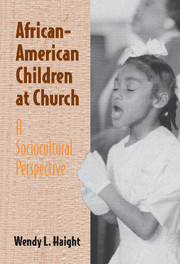Book contents
- Frontmatter
- Contents
- List of Tables
- Acknowledgments
- PART ONE OVERVIEW
- PART TWO PATTERNS OF SOCIALIZATION AND PARTICIPATION
- PART THREE RELATIONSHIPS OF RESEARCH AND PRACTICE
- 11 The Computer Club: Implications of Research for Practice
- 12 Enhancing University Students' Understanding and Appreciation of Cultural Diversity: Implications of Practice for Research
- PART FOUR CONCLUSION
- References
- Index
12 - Enhancing University Students' Understanding and Appreciation of Cultural Diversity: Implications of Practice for Research
Published online by Cambridge University Press: 10 August 2009
- Frontmatter
- Contents
- List of Tables
- Acknowledgments
- PART ONE OVERVIEW
- PART TWO PATTERNS OF SOCIALIZATION AND PARTICIPATION
- PART THREE RELATIONSHIPS OF RESEARCH AND PRACTICE
- 11 The Computer Club: Implications of Research for Practice
- 12 Enhancing University Students' Understanding and Appreciation of Cultural Diversity: Implications of Practice for Research
- PART FOUR CONCLUSION
- References
- Index
Summary
One of the reasons for organizing the Computer Club was to provide European-American university students intending to enter the helping professions with meaningful participation within the local African-American community. When asked to explain the low achievement of many African-American children in Salt Lake City's public schools, adult informants discussed a lack of interest in African-American children by local educators and an inadequate coverage of African-American history and culture in the curriculum (see chapter 6). In addition, we shared the concern that the understanding and empathy of many European-American helping professionals toward African-American children needed enhancement. These concerns also were echoed by recent interviews with experienced black teachers (Delpit, 1988; Foster, 1994), who generally viewed their white colleagues as both unsuccessful with the overwhelming majority of black students and unresponsive, “They're [white colleagues] so headstrong, they think they know what's best for everybody, for everybody's children. They won't listen” (Delpit, 1988, p. 282).
As the population of the United States continues to diversify, an understanding of cultural diversity is increasingly necessary for all helping professionals. Professionals in Salt Lake City are no exception. Population statistics indicate that more and more people from diverse cultural communities are arriving in Salt Lake City, many fleeing the violence and weakening economy of the West coast (Mathews & Wright, 1994). Yet many middle-class, European-American students have relatively little knowledge and experience with issues such as racism.
- Type
- Chapter
- Information
- African-American Children at ChurchA Sociocultural Perspective, pp. 172 - 192Publisher: Cambridge University PressPrint publication year: 2001



